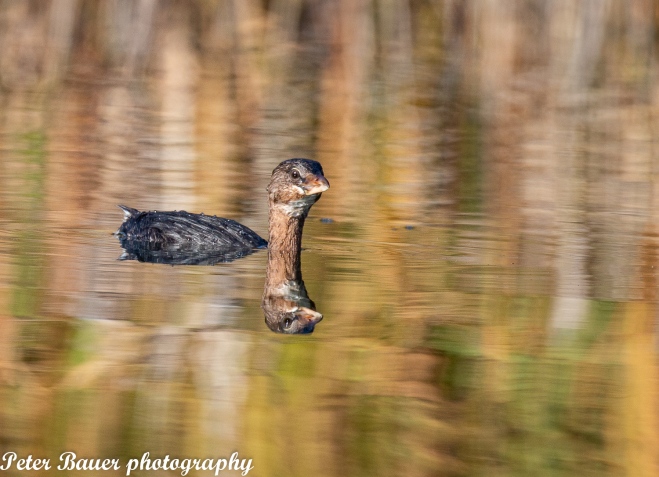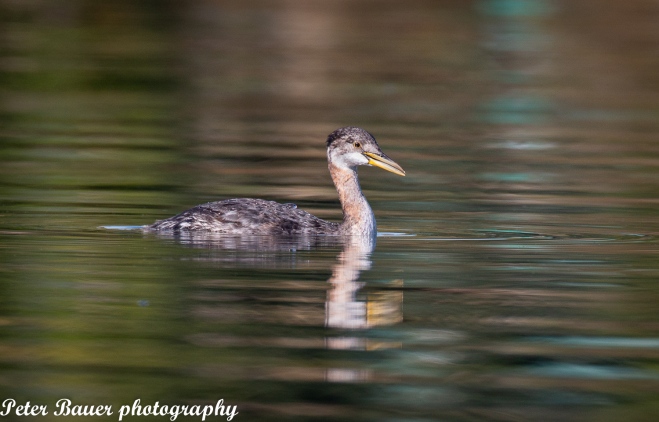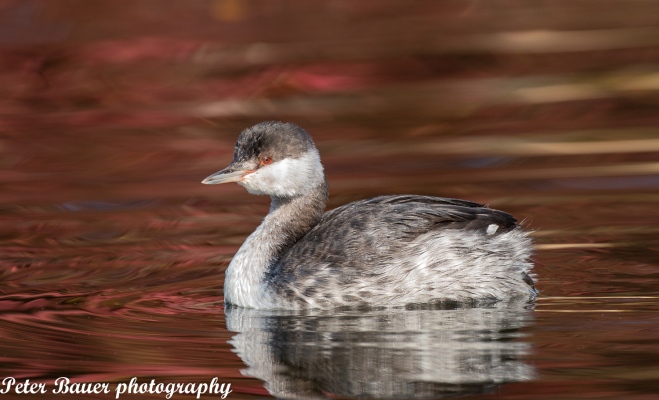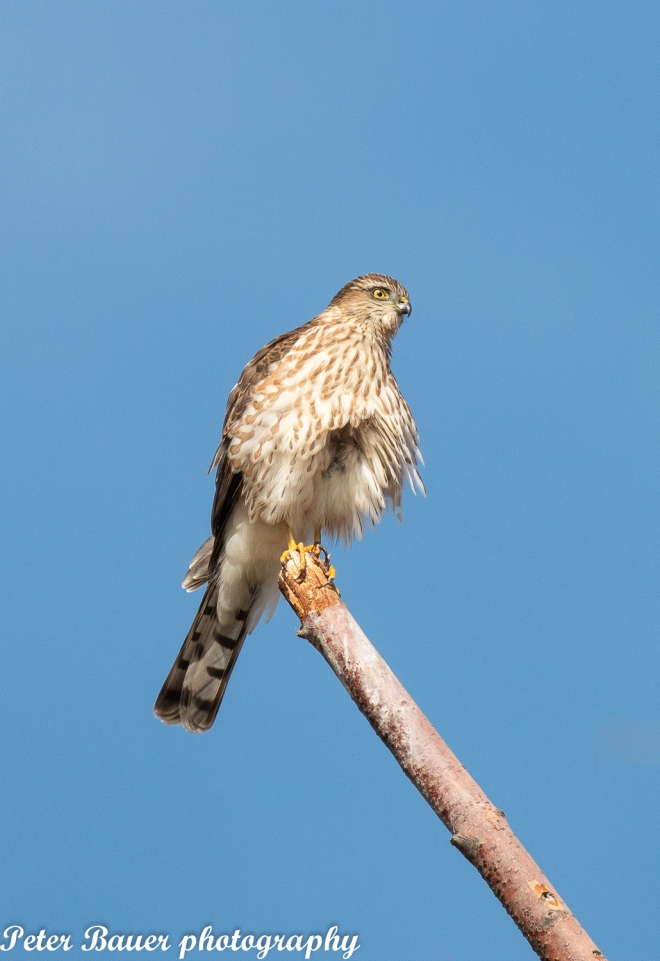Good Grebe!
Birds designed to capture fish often have a jauntiness to them that their vegetarian cousins lack. So it is with grebes. When being photographed on a lake they can often be seen diving repeatedly, feeding. Also, they prefer this method of escape from the nosy photographer over flying. That’s where the fun begins. As they disappear underwater, I paddle to position myself where they might pop up. Usually I’m wrong, or they saw my maneuver and appear 50 yards farther away. But occasionally they surface close by, and paradoxically can seem less alarmed at paddle’s length than when at a distance.
I was treated to three different grebe species when I last visited a local lake. First the dreaded two-headed grebe.
(Actually a juvenile pied-billed grebe about to dive.)
The red-necked grebe, a visitor we have only seen in the Methow this year, has a long-necked elegance. The neck color is fading some out of breeding season.
My biggest thrill came from the pursuit of this horned grebe. Since it was hugging the shore, I kept trying to shoot it against colorful backgrounds. Success!
Of course, the horned grebe looks spectacular in breeding plumage, but I have to go elsewhere for that as they don’t breed/nest in the Methow.
And, for desert, a juvenile female sharp shinned hawk in a rare accessible pose. The odd feathers are due to intense preening.
Thanks for reading.

As always, a fun read and great photos, thanks.
LikeLiked by 1 person